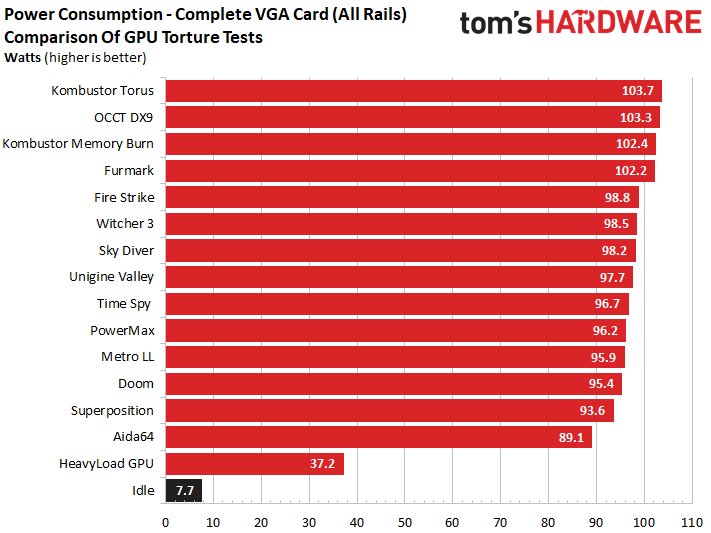Power consumption at a glance
First of all, let's look at the average power consumption of the tests, because physics can't be deceived and everything you do in the form of electrical energy ends up on the surfaces of GPU, VRM and the surfaces of the GPU, VRM and the other components. This is where the synthetic stress test programs, which were all above the power limit of 100 watts on our test card, lead.
Real and more realistic applications like "The Witcher 3" and the loops of the 3DMark, as well as "Unigine Valley" and "Metro Last Light" follow closely on the seats, but do not quite reach the power limit. Nevertheless, these values are to be considered more realistic, because especially with overclocked systems, possible errors and instability occurred much more.

GPU Temperatures
Our test card is interesting in that only the GPU itself is cooled directly, as only it has contact with the heat sink. However, we are already seeing that the order in terms of the degrees achieved by the GPU diode is roughly the same as what we have also supplied in terms of energy.

- 1 - Einführung und Testsystem
- 2 - Witcher 3, Doom (2016), Metro LL
- 3 - 3DMark Fire Strike, Time Spy, Sky Diver
- 4 - Unigine Valley, Unigine Superposition
- 5 - Furmark, OCCT
- 6 - MSI Kombustor
- 7 - powerMAX, Aida64, Heavy Load
- 8 - Leistungsaufnahme und GPU-Temperaturen
- 9 - Komponenten-Temperaturen (Memory, VRM, Package)
- 10 - Zusammenfassung und Fazit

































Kommentieren